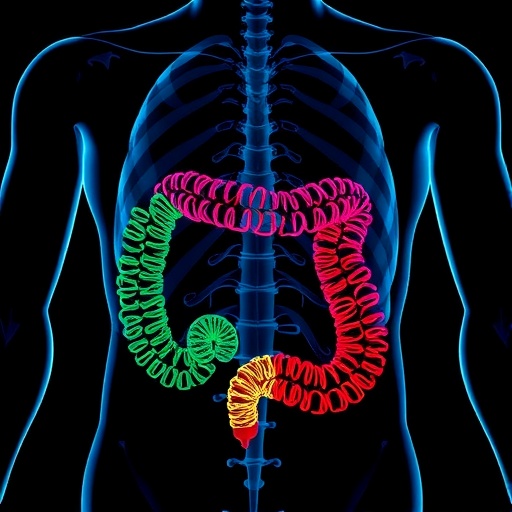In a groundbreaking study published in Nature Communications, researchers have unveiled intricate age- and sex-specific patterns of coronary artery atherosclerosis by analyzing one of the largest cohorts of Chinese individuals to date. This extensive research represents a monumental step forward in understanding how cardiovascular disease manifests differently across demographic groups, potentially revolutionizing approaches to prevention, diagnosis, and personalized treatment strategies.
Coronary artery atherosclerosis, the gradual accumulation of lipid-rich plaques within the walls of coronary arteries, remains the leading cause of mortality worldwide. While previous studies have established the importance of age and biological sex in cardiovascular risk, Yang, Zhang, Song, and colleagues have provided unprecedented high-resolution insights by leveraging an immense dataset drawn from a demographically diverse Chinese population. The scale of this cohort enabled unprecedented granularity, permitting the researchers to decipher subtleties in disease presentation that were previously masked by smaller studies.
The research underscores that the pathophysiological progression of atherosclerosis is not a monolithic process but rather one that varies distinctly between men and women, and changes substantially with age. Through comprehensive imaging techniques, including advanced computed tomography angiography combined with sophisticated machine learning algorithms, the team meticulously characterized plaque composition, burden, and distribution, revealing novel patterns that challenge classical paradigms. These findings emphasize the critical need to tailor cardiovascular risk assessment models to reflect biological heterogeneity within populations.
One of the most revealing observations from the study was the stark difference in plaque morphology between sexes. Male subjects tended to exhibit plaques characterized by larger fibrous caps with more extensive calcification at earlier ages, suggesting a propensity for stable but obstructive lesions. Conversely, female participants displayed plaques with higher lipid core volumes and thinner fibrous caps, particularly post-menopause, indicative of more vulnerable plaques that possess greater risk for rupture and acute coronary events. This sexual dimorphism has important clinical implications, particularly with regard to stratifying risk and customizing therapeutic interventions.
Age remained a paramount factor influencing coronary artery disease pathogenesis. The research delineated three distinct phases of atherosclerosis progression: early, mid-life, and advanced stages, each with unique pathological features. In younger cohorts, endothelial dysfunction and microvascular inflammation were predominant, with minimal plaque burden. Mid-life individuals showed accelerated plaque accumulation and increased heterogeneity in composition, while the elderly cohort demonstrated extensive calcification, fibrosis, and luminal narrowing. These staged insights afford clinicians a more nuanced framework for timing interventions and monitoring disease trajectory.
A remarkable aspect of this study lies in its extensive use of artificial intelligence (AI) to decode complex imaging data. Deep learning models, trained on thousands of coronary angiograms and tomographic scans, enabled automated segmentation and classification of atherosclerotic features across the cohort. This high-throughput analytical capacity not only reduced observer variability but also unearthed previously unrecognized correlations between plaque characteristics and clinical variables such as lipid profiles, blood pressure, and inflammatory markers. The integration of AI thereby amplifies the translational relevance of the findings, paving the way for AI-assisted clinical decision support systems.
The investigators also explored genetic and environmental contributors underlying observed patterns. Through integration with genome-wide association studies and socioeconomic data, the study hinted at multifactorial origins of sex- and age-specific susceptibility. For instance, certain polymorphisms related to lipid metabolism showed differential expression correlated with sex hormone levels, which might explain sex differences in plaque stability. Additionally, urbanization-associated lifestyle factors, including diet and physical activity, appeared to modulate disease severity, underscoring the interplay between intrinsic biology and extrinsic exposures.
Importantly, this research highlights the limitations of applying Western-centric cardiovascular models universally. The Chinese cohort exhibited distinctive atherosclerotic phenotypes possibly influenced by unique genetic backgrounds, environmental pressures, and cultural practices such as dietary habits rich in soy and tea consumption. Consequently, the study calls for regional recalibration of risk calculators and diagnostic thresholds to enhance predictive accuracy and therapeutic outcomes in Asian populations, which have historically been underrepresented in cardiovascular research.
The implications of this work extend into public health policy and clinical practice. With cardiovascular disease imposing an enormous burden on healthcare systems, especially in rapidly aging societies, early detection and intervention remain critical. By mapping age- and sex-specific disease trajectories, Yang et al. enable more targeted screening policies that prioritize high-risk groups. For example, postmenopausal women could benefit from intensified plaque vulnerability assessments, while younger males might warrant surveillance focused on calcification progression.
Moreover, the elucidation of sex-specific pathways offers a rationale for personalized pharmacotherapies. Hormonal modulation strategies, cholesterol-lowering agents, and anti-inflammatory drugs might be optimized based on differential plaque characteristics. The study’s extensive dataset provides a fertile foundation for future clinical trials aimed at testing such stratified interventions, thereby advancing precision medicine in cardiology.
The technical rigor of the study is reinforced by its multimodal diagnostic approach. Beyond routine clinical imaging, the investigators utilized intravascular ultrasound and optical coherence tomography in subsets of patients to validate plaque morphology findings. Biochemical assays of circulating biomarkers complemented imaging data, offering a comprehensive picture of systemic and localized atherosclerotic processes. This integrative methodology enhances confidence in the reproducibility and robustness of the results.
Beyond its immediate clinical applicability, the study also contributes to fundamental biological understanding. By dissecting how sex hormones influence vascular inflammation, extracellular matrix remodeling, and smooth muscle cell behavior, the research sheds light on the molecular underpinnings of atherosclerosis heterogeneity. Such mechanistic insights could inspire novel therapeutic targets that disrupt pathogenic cascades at their inception rather than merely managing symptoms.
Furthermore, the research methodology itself serves as a paradigm for future large-scale population studies. The seamless fusion of big data analytics, AI, precision imaging, and omics profiling establishes a blueprint for tackling complex multifactorial diseases. This interdisciplinary approach facilitates the identification of latent disease phenotypes and novel biomarkers that might have otherwise remained obscured.
One cannot overstate the importance of diversity and scale in such investigations. The inclusion of over 50,000 individuals spanning diverse regions of China allowed the researchers to explore regional disparities and socio-demographic influences on disease patterns. This level of representation bolsters the generalizability of conclusions and counters biases that afflict smaller or more homogeneous cohorts. It also emphasizes the urgent need for similar efforts worldwide to uncover population-specific disease mechanisms.
While the study marks a significant leap forward, challenges remain. Longitudinal follow-up will be essential to validate temporal changes in plaque features and their predictive value for major adverse cardiac events. Furthermore, translating AI-derived phenotypic classifications into routine clinical workflows demands user-friendly interfaces and clinician training. Ethical considerations regarding data privacy and algorithm transparency also necessitate ongoing vigilance.
In conclusion, the meticulous dissection of age- and sex-specific coronary artery atherosclerosis in this landmark study reshapes our comprehension of cardiovascular disease heterogeneity. By combining cutting-edge imaging, artificial intelligence, and broad genomic insights, Yang and colleagues have illuminated pathways toward more equitable, precise, and effective cardiovascular care. As populations age and cardiovascular risk profiles evolve, such knowledge will be indispensable in crafting future strategies to alleviate the global burden of heart disease.
Subject of Research: Age- and sex-specific patterns of coronary artery atherosclerosis in a large Chinese population cohort
Article Title: Deciphering age- and sex-specific patterns of coronary artery atherosclerosis from a large Chinese cohort
Article References:
Yang, X., Zhang, J., Song, Y. et al. Deciphering age- and sex-specific patterns of coronary artery atherosclerosis from a large Chinese cohort. Nat Commun (2025). https://doi.org/10.1038/s41467-025-64940-8
Image Credits: AI Generated
Tags: advanced imaging in atherosclerosisage-specific cardiovascular diseaseChinese population health studycoronary artery atherosclerosis patternscoronary artery disease mortalitydemographic factors in cardiovascular riskhigh-resolution imaging techniqueslipid-rich plaque accumulationmachine learning in medical researchpersonalized treatment strategies for heart diseaseprevention of cardiovascular diseasesex differences in heart disease





